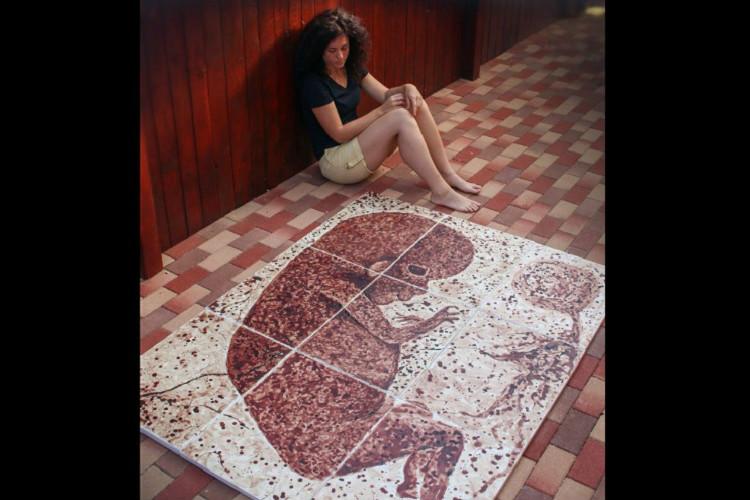Until recently, performance art had not been widely accepted as a form of expression. However, one woman was able to change this public opinion in the mid-1970s. Born in Belgrade, Serbia, Marina Abramović’s first well-known performance piece proved that calling herself the “grandmother of performance art” is anything but inaccurate.
Using her body as both the subject and the medium of her art, Abramović uses performance art to explore the physical and mental limits of an individual through works that deal with the simple nature of everyday life. She has withstood suffering and exhaustion through her art in order to find emotional and spiritual transformation, and one notable example of the danger she has put herself in for this quest lies in her first prominent performance act that took place over 40 years ago.
In 1974, Abramović conducted a horrifying experiment that tested the limits binding the performer and the audience. In her performance piece “Rhythm 0, 1974,” Abramović assigned herself a passive role and agreed to stand in an open space for six hours behind a table that held 72 different objects. She was preparing to allow an audience to enter the room and use the objects found on the table to their will; there was even a sign explaining what she was doing and her willingness to take full responsibility for the actions of others.
Some of the items found on the table were harmless: olive oil, roses, a feather. Others were more questionable: condoms, whips, a scalpel. There was even a pistol and a pack of bullets lying on the table. “I was ready to die,” states Abramović as she recalls her performance in later years.
At the beginning of her performance, her audience was more reserved and quiet. They were hesitant to push the boundaries, to go past the limit of normal social interaction. However, the group became more aggressive as time went on. People began tearing her clothes away and piercing her skin with rose stems. They cut her neck, drank her blood, made her lie down on a table and stabbed a knife between her legs. One person put a bullet into the gun and held it at her head with her finger on the trigger, waiting to see if she would really shoot herself at his command. Another man tried to have sex with her before being pulled away.
After the six hours had ended, the gallery supervisor entered the room and announced that the act was over. Abramović had been cut, pricked, caressed, sliced, almost raped, and almost shot in the head. As soon as she began moving her own body independently, the audience members ran away. Nobody was willing to confront her or the things that they had done to her.
After the performance piece had ended, Abramović described the feeling of being used as an object for six hours. She stated, “What I learned was that… if you leave it up to the audience, they can kill you.” In the room housing her performance, there was no law; the audience could do whatever they pleased, whether it was something that helped Abramović or harmed her. The criminality and stigmas behind certain items like the gun were stripped, and they became merely a piece of a bigger act. Abramović, a living, breathing, thinking woman, was reduced to nothing more than an object for other people to play with, and the same audience members who poked and prodded her ran away as soon as she stopped succumbing to their will, unable to face her as a person.
“Rhythm 0” combined endurance with empathy, complicity with loss of control and passivity with danger. It pushed the boundaries of self-discovery, not only for Abramović but for her audience as well. It was a trust exercise to test the limits of social interaction when no societal rules or norms were present. Without the threat of stigmatization or punishment, Abramović’s audience turned her into their puppet, using her for their own entertainment and pleasure.
Abramović’s performance act raises many questions about human nature, a concept that has already been debated and theorized in the past. What determines the qualities of people? Are human beings inherently evil or good? Do we really have morals, or are we merely conforming to society’s conventional standards of what is right and wrong? While there may not be any answers to these questions, Abramović’s “Rhythm 0” might have brought us closer to discovering the truth.
#performanceart #marinaabramovic #rhythm0






